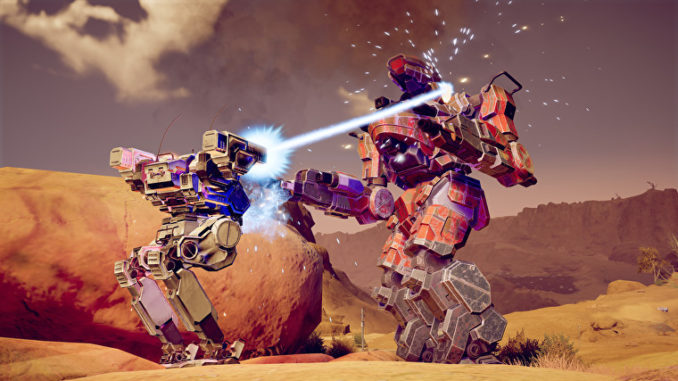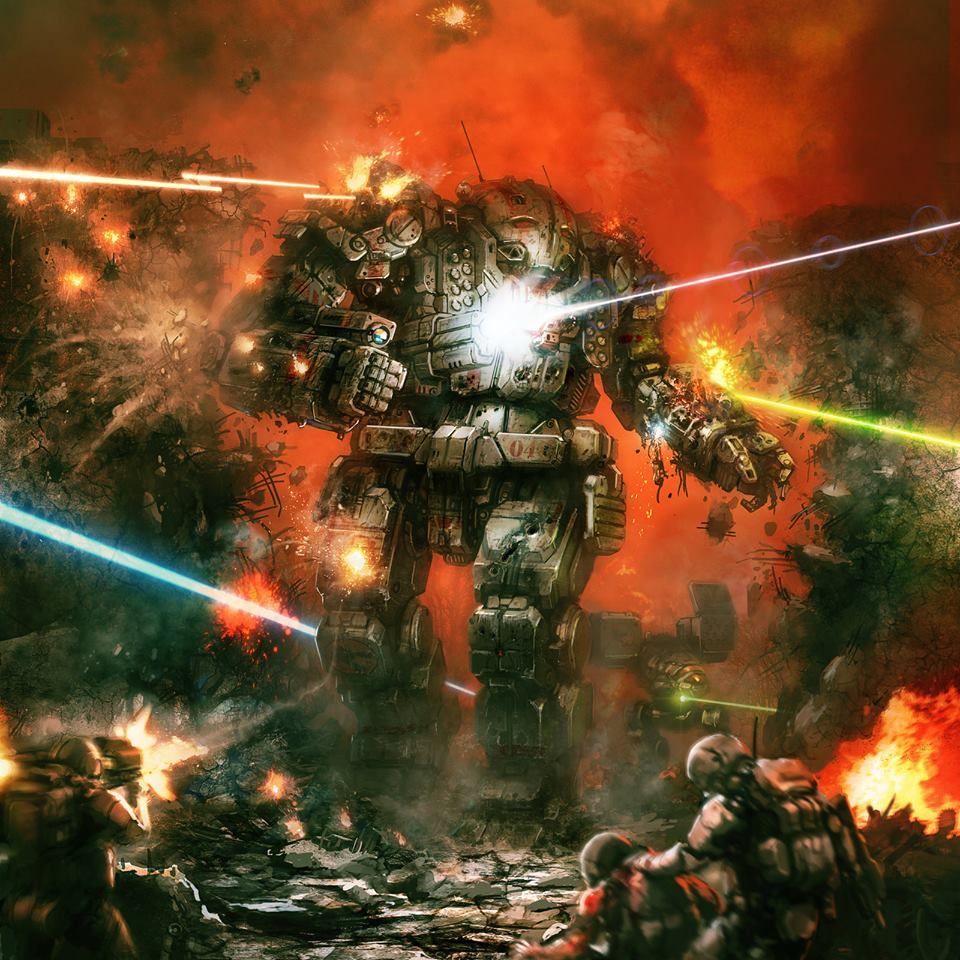
Welcome to the HPG Newsburst – Tons of Fun
Last time we looked at some of the ways people engage with the Battletech universe. Today’s article will provide insights into the weight classes of battlemechs and their traditional roles in game. In Part 2 we will examine the equipment and weaponry seen in the 3025 era. In Battletech, a battlemech’s weight ranges from 20 tons up to 100 tons, in 5 ton increments. To help categorize ‘mechs we have 4 distinct weight classes: light, medium, heavy and assault. I will be referring to common archetypes in this article, but remember there are going to be exceptions to these.
Light ‘Mechs: 20 – 35 tons
Light ‘mechs are the fastest moving in the game. They are lightly armed and armored, relying on evasiveness and mobility to survive. It is inadvisable to slow to a walk to take an accurate shot, as the potential damage output is rarely worth the imminent destruction of your ‘mech.
They are cheap, at least compared to other battlemechs. Often serving as scouts or light cavalry where they can utilize their mobility to harass and apply pressure. It is common to see them spotting for larger ‘mechs utilizing indirect fire, or flanking slower ‘mechs. The 20 ton Locust, 30 ton Valkyrie and 35 ton Jenner are all common examples of light ‘mechs.
Medium ‘Mechs: 40 – 55 tons
Slower than the light ‘mechs, but making gains in armor and/or weaponry, medium battlemechs start bringing serious firepower. A chunky ‘mech can ignore most light ‘mechs for a few turns but even a 40 ton medium will hurt if left for a turn or two.
At the lighter end of this weight-class we see the heaviest striker/cavalry ‘mechs who excel at flanking maneuvers and attacking the rear. They also pursue fleeing ‘mechs or break through to attack hostile fire-support ‘mechs. The 40 ton Sentinel and 50 ton Crab are good examples of medium striker/cavalry ‘mechs.
As we approach the heavy weight-class we will see more front-line ‘mechs with a nice balance of characteristics. They are a bit slower, but their thicker armor means they can take a few hits and their weapon load-out is usually flexible and potent. The 50 ton Enforcer and 55 ton Wolverine are examples of front-line medium ‘mechs.
Heavy ‘Mechs: 60 – 75 tons
Here we see some intimidating equipment. Heavy ‘mechs are not precision tools, but mallets that you can wield for some quick and brutal problem solving. Most ‘mechs in this weight-class fall into one of two categories: brawlers or fire-support.
Brawlers wade across the battlefield, soaking up damage as they close to optimal weapons range. Many will continue to close and apply their tonnage directly to the foe via a fist or foot. If they corner or catch a smaller ‘mech, the mechwarrior in question had better be wearing their brown pants. Their firepower is still a threat to assault ‘mechs, though less potent than that of the fire-support ‘mechs. The 60 ton Dragon, 65 ton Thunderbolt and the 75 ton Orion are all heavy brawlers.
Fire-support ‘mechs like to fight from range and are often your typical glass cannons. Less weight spent on armor leaves more weight for weaponry. Some do find a balance, though still mount weapons with a minimum range. Due to this combination of traits they are often found at the back of the field, in cover and with the firing trigger taped down for the whole game. Hostiles would love for the hail of death to stop, so fire-support ‘mechs have to be closely guarded as they are made of paper and are full of very explosive ammo. Ammo that likes to explode. Inside the ‘mech. The 65 ton Papermech Jagermech and Catapult are both good examples of heavy fire-support ‘mechs. They are both 65 tons, though one uses autocannons while the other uses long range missile pods.
Assault ‘Mechs: 80 – 100 tons
Assault ‘mechs are slow, lumbering behemoths that dominate the battlefield. Juggernauts that don’t die and won’t stop moving until they (eventually) reach their destination and all the while they fire salvo after withering salvo. Saying that they are expensive is an understatement. However, a well positioned assault ‘mech can clutch victory from the jaws of defeat Just don’t expect them to set any speed records.
Rather than detailing a couple of archetypes (as assault ‘mechs are an archetype all on their own) I will describe 3 popular ‘mechs.
First, the 80 ton Awesome, a “zombie-mech” so named because you can blow both its arms off as well as a leg and it still will keep killing all your stuff. This is because most of the Awesome’s firepower is mounted in the torso. It is a wall of armor and it carries no ammunition, so there is no chance of an impromptu fireworks display. The only hope you have of killing this ‘mech is the 1 in 36 chance of a headshot; that is if you have a weapon large enough to one-shot the Awesome in the head. The Awesome is an energy-weapon wielding roadblock.
Next, the 90 ton Highlander, because what is scarier than a 90 ton ‘mech? One that jumps. If you play Battletech for any period of time you will hear the term “highlander burial” because the game has rules for death from above attacks (DFA), where ‘mechs use their thrusters to jump on other ‘mechs. It is risky and it cripples both ‘mechs, but if you do it with 90 tons, whatever was below you is now a structural beam sticking out of the ground. The Highlander is equipped to fight at all ranges and is well protected. But what matters it that it is 90 tons and can fly.
Finally the Atlas, a 100 ton poster-boy of Battletech. Big, slow, covered in armor and weapons, the Atlas is a walking area-denial death machine. It even has skull-shaped plating on its head. Commissioned by the legendary General Aleksandr Kerensky who requested the following; “A ‘mech as powerful as possible, as impenetrable as possible, and as ugly and foreboding as conceivable, so that fear itself will be our ally.” The Atlas met the design brief, which tells you all you need to know about this thing.

In Summary
The weight of a ‘mech informs two key aspects: how fast it is and how much armor and weaponry is strapped to the thing. The tonnage required to make a heavier ‘mech move at high speed leaves little room for anything else, so you often see an inverse relationship of speed vs tonnage, while combat capacity is tied to tonnage very closely. Again, there are exceptions to the archetypes. In my last article I made references to the Charger, an assault-scout-mech and the Urbanmech, a meandering light ‘mech with an over-sized cannon. The stock Charger was a total failure, while the humble Urbie is one of the most common ‘mechs in the Inner Sphere. Still, it is fun to run up to someone at 80 kph and kick them with 80 tons of ‘mech.
In Part 2 I shall cover the equipment and weaponry of 3025 and can consider that article the end of our Battletech glossary. This will give you all the knowledge needed to talk shop about all things Battletech, so we can look at the Battletech starter boxes and assess the ‘mechs within!
Thanks for reading this HPG Newsburst. If you have any questions or feedback, please leave a comment below I would love to hear from you!
